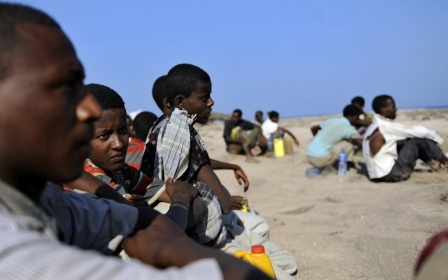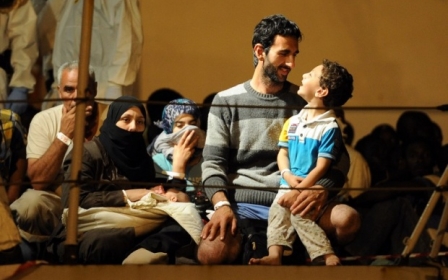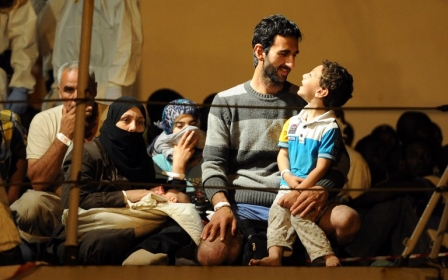'We are alone': Syrians rescued off Italian coast

All the migrants on the abandoned cargo ship Ezadeen, which was towed to safety in southern Italy late on Friday, were Syrian nationals, according to the coastguard commander in Corigliano Calabro, near the harbour where the boat eventually docked.
Each of the passengers, reported to number between 360 and 450, is believed to have paid between $4,000 and $6,000 to people smugglers before embarking on the perilous journey from Turkey to Italy.
One of the ship’s passengers told Italian officials after they asked those on board to identify the ship by radio: “We are alone and we have no one to help us.” Another passenger on board the vessel told the Italian coastguard before the boat was picked up: “We’re without crew, we’re heading towards the Italian coast, and we have no-one to steer.”
The Ezadeen, sailing under the flag of Sierra Leone, was discovered drifting in choppy waters 40 nautical miles (46 miles) off the coast of Italy on Friday. The passengers have now been taken to other parts of Italy to receive medical treatment.
The Ezadeen is the second migrant ship in a week to be abandoned off the coast of Italy; on 31 December the Blue Sky M, carrying some 800 Syrian and Eritrean nationals, was towed to safety after being found without a crew five miles off the coast.
Leonard Doyle, a spokesperson for the International Organisation for Migration, said the new tactic of abandoning ships crammed with migrants was a worrying development. “The abandonment of ships in the high seas is a very dangerous thing to do at the best of times and takes the smuggling game to a whole new level that we’ve never seen before."
Migrant smuggling is a lucrative industry. A UN-sponsored conference on the practice found that criminal networks make almost $7 billion a year from moving people across borders without documents.
The winter Mediterranean is choppy and dangerous, and the numbers of migrants attempting the crossing during these months are usually markedly lower than at other times of the year. However, the prices paid by Ezadeen’s passengers, estimated by the European border control mission to be up to three times the usual tariff, show that people are no less desperate to attempt the risky crossing.
A conservative estimate puts the number of refugees who died while trying to cross the Mediterranean into Europe in 2014 at more than 3,500. A further 200,000 were rescued, Analysts have speculated that the tactic of abandoning ships like the Ezadeen could be a way of forcing the coastguard to step in and rescue the passengers before disaster strikes.
Operation Mare Nostrum, an Italian-run rescue mission to pluck shipwrecked refugees from the seas run, was cancelled in October 2014, with officials arguing that the existence of a Mediterranean rescue scheme acted as a “pull factor” encouraging people to attempt the journey.
However, the abandoning of two ships off Italy within the space of a week suggests that people smugglers are turning to new and ever more dangerous tactics as European governments seek to stem the tide of refugees coming to their shores.
In a statement, the head of the UN refugee agency’s Europe bureau, Vincent Cohetel, called for urgent action to “provide legal alternatives” to such dangerous voyages.
"The use of larger cargo ships is a new trend, but it is part of an ongoing and worrying situation that can no longer be ignored by European governments.”
New MEE newsletter: Jerusalem Dispatch
Sign up to get the latest insights and analysis on Israel-Palestine, alongside Turkey Unpacked and other MEE newsletters
Middle East Eye delivers independent and unrivalled coverage and analysis of the Middle East, North Africa and beyond. To learn more about republishing this content and the associated fees, please fill out this form. More about MEE can be found here.





